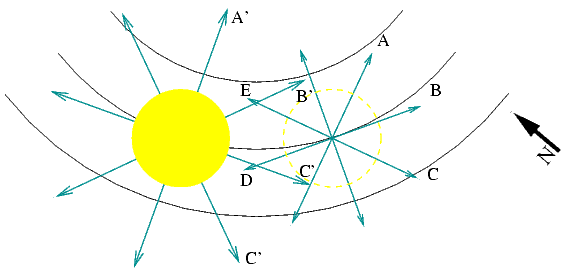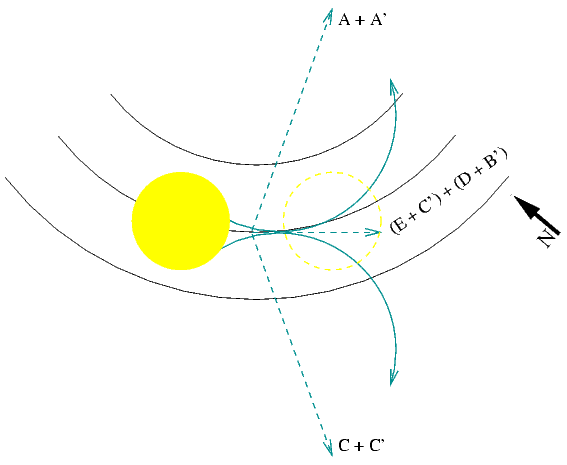As for the whole high-pressure/low-pressure thing, there's no reason that air cannot be under various pressures in different places on a flat Earth, creating wind just as it does on a round Earth.
As for the Coriolis effect, here's my first attempt at an explanation: the sun moves clockwise around the Earth over the equator, right? Well, this heats the air directly under the sun which is then pushed away from the equator. The sun then moves and heats air that's farther west, and the air that the sun was previously over cools off slightly and therefore is pushed away from the equator with a lesser force (since pressure is proportional to temperature). This is illustrated in the following figure:

This is a top-down view of a wedge of the flat Earth with the sun above. The solid yellow circle represents the sun's current position, whereas the dashed circle is its position at some time in the recent past.
The cyan arrows represent the air flow induced by the increased pressure that is the result of the air being heated by the sun. Note that the arrows are longer for the sun's current position, because the air is warmer there.
Consider especially the arrows labelled E and D (projecting from the "old" position) and B' and C' (projecting from the "new" position). What is the total effect of these arrows? i.e., what wind will be experienced here? It is essentially the sum of the different arrows, (E + C') + (D + B'). I've arranged the terms in this fashion because the arrows that are grouped together are approximately antiparallel, making them easy to add together. That is, E is pointing almost exacly opposite to C'. However, E is larger than C', which means the sum of these two arrows will be a shorter arrow pointing more or less in the direction of E (i.e. approximately northeast). Similarly, D + B' is a short arrow pointing more or less in the direction of D (i.e. approximately southeast). Clearly, these two short arrows sum to an arrow pointing due east, which agrees with the coriolis effect.
As we get farther away from the equator, it becomes more clear that the winds predicted by this model agree with the coriolis effect: consider arrows A and A'. The are approximately parallel and point to the northeast, so their sum will also point to the northeast. Similarly, C and C' sum to a wind moving southeast. The "total" picture is as follows:

As we get even farther from the equator, the air is longer sufficiently heated by the sun, and when the warm tropical winds meet this cold front they are reflected back south, creating the cyclical effect we observe in tropical storms.
Thus we can that solar heating on the flat Earth predicts the winds necessary to create the Coriolis effect.